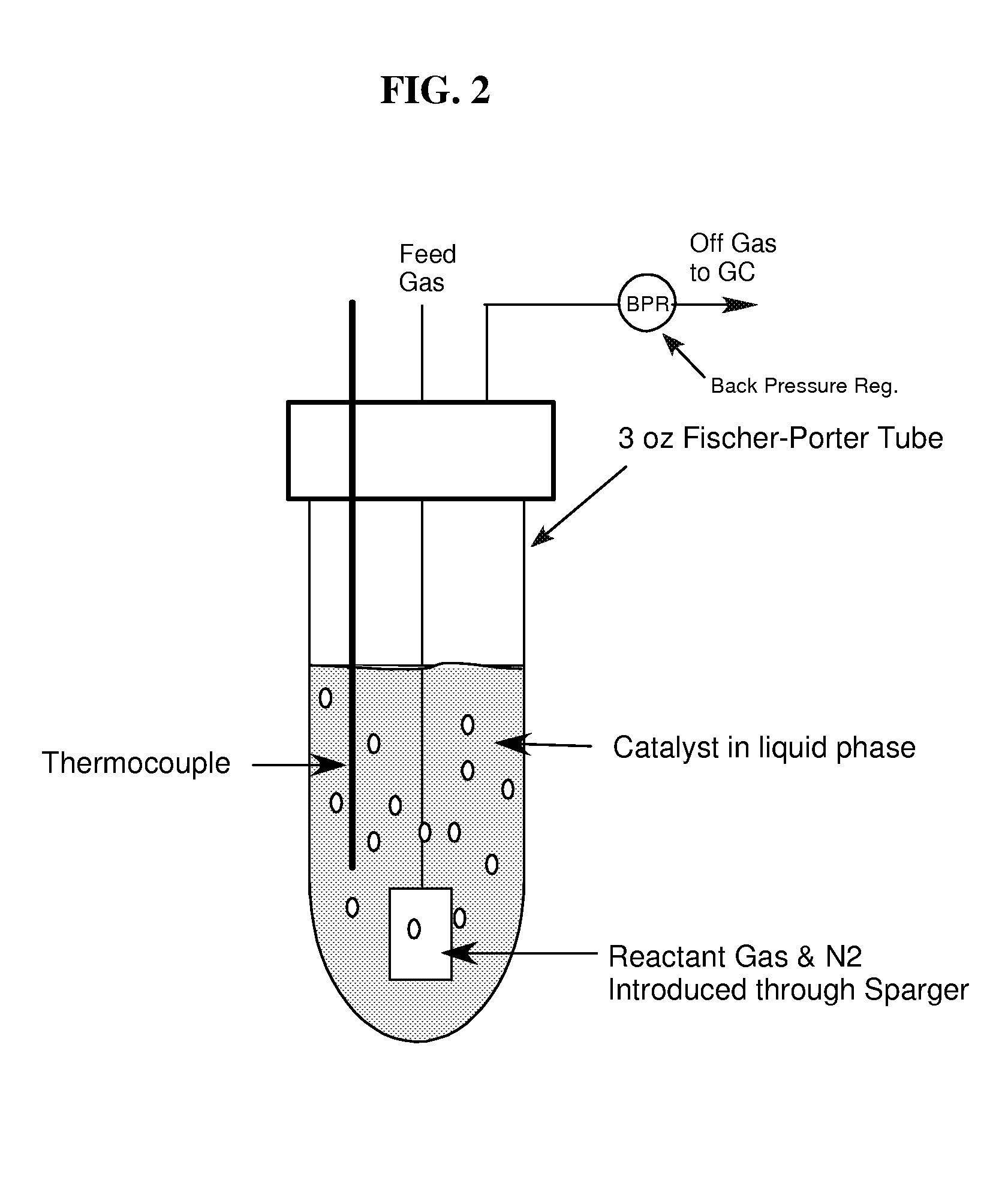Sulfonated organophosphine compounds and use in hydroformylation processes
a technology of organophosphine and hydroformylation process, which is applied in the direction of organic compounds/hydrides/coordination complex catalysts, organic compounds/chemical process catalysts, group 5/15 element organic compounds, etc., can solve the problems of ligand alkyl-aryl exchange generating three undesirable effects, affecting the stability of ligands, etc., to achieve the effect of improving ligand stability, reducing the number of ligand
- Summary
- Abstract
- Description
- Claims
- Application Information
AI Technical Summary
Benefits of technology
Problems solved by technology
Method used
Image
Examples
example 1
Preparation of Neutral Ligand 1 and Ionic Ligand 1A (With Reference to FIG. 1)
(a) Preparation of 4-phenylcyclohexanol
[0082]4-Phenylhexanone (1.74 g; 10 mmoL) is mixed with 1M lithium aluminum hydride (LiAlH4) solution in tetrahydrofuran (THF) (10 mL; 10 mmoL). The reaction mixture is stirred and refluxed for 6 hrs. After the starting ketone is consumed as determined by thin-layer chromatography (TLC) and gas phase chromatography (GC), the reaction mixture is carefully quenched with water (40 mL) whereupon a precipitate forms. Then, hydrochloric acid (10 mL) is added to dissolve the precipitate, and the solution is twice extracted with diethyl ether (20 mL twice). The combined ether portions are dried with Na2SO4, and the solvent is evaporated to yield 4-phenylcyclohexanol (1.71 g; 74%). The purity and identity of the compound are established by TLC and GC using an authentic sample of the material obtained from Lancaster Company.
(b) Preparation of 4-phenylcyclohexyl 4-methylbenzenesu...
example 2
Preparation of Neutral Ligand 2
(a) Preparation of dicyclopentyl(4-phenylcyclohexyl)phosphine-borane, Cpy2P(BH3)C6H10Ph
[0089]The product is made similarly to its analog in Example 1 from dicyclopentyl-phosphine-borane (10.6 g; 57.5 mmol.), n-butyl lithium (39.5 mL of 1.6 M solution; 63.3 mmol.) and 4-phenylcyclohexyl 4-methylbenzenesulfonate (22.8 g; 68.9 mmol.). Yield 14.5 g (74%). 31P{1H} NMR (δ, C6D6, ppm): 33.22 and 33.83 (broad); 1H NMR (δ, C6D6, ppm): 0.944 (m, 3H, BH3), 1.2-2.2 (m, 27H, cyclopentyl+cyclohexyl), 2.82 (m, 1H, PhCH), 7.0-7.25 (m, 5H, Ph).
(b) Preparation of dicyclopentyl(4-phenylcyclohexyl)phosphine, Cpy2PC6H10Ph (Ligand 2)
[0090]The phosphine is made similarly to its analog in Example 1 from the borane precursor dicyclopentyl(4-phenylcyclohexyl)phosphine-borane (0.60 g; 1.75 mmol.), and morpholine (4.5 mL). Yield 0.55 g (95%). 31P{1H} NMR (δ, C6D6, ppm): −0.95. 1H NMR (δ, C6D6, ppm): 1.1-2.5 (m, 27H, cyclopentyl+cyclohexyl), 2.74 (m, 1H, PhCH), 7.0-7.33 (m, 5H, Ph...
example 3
Preparation of Neutral Ligand 3
(a) Preparation of di-isobutyl(4-phenylcyclohexyl)phosphine-borane, i-Bu2P(BH3)C6H10Ph
[0091]The product is made similarly to its analog in Example 1 from di-isobutylphosphine-borane (10.1 g; 62.9 mmol.), n-butyl lithium (43.2 mL of 1.6 M solution; 69.2 mmol.) and 4-phenylcyclohexyl 4-methylbenzenesulfonate (25.0 g; 75.5 mmol.). Yield 5.3 g (29%). 31P{1H} NMR (δ, C6D6, ppm): 18.63 and 19.18 (broad).
(b) Preparation of di-isobutyl(4-phenylcyclohexyl)phosphine, i-Bu2PC6H10Ph (Ligand 3)
[0092]The product is made similarly to its analog in Example 1, from its borane precursor di-isobutyl(4-phenylcyclohexyl)phosphine-borane (5.3 g; 16.6 mmol.) and morpholine (100 mL). Yield 3.8 g (73%). 31P{1H} NMR (δ, C6D6, ppm): −40.09; 1H NMR (δ, C6D6, ppm): 1.0-2.25 (m, 27H, isobutyl+cyclohexyl), 2.56 (m, 1H, PhCH), 7.05-7.27 (m, 5H, Ph).
PUM
| Property | Measurement | Unit |
|---|---|---|
| temperature | aaaaa | aaaaa |
| temperature | aaaaa | aaaaa |
| total gas pressure | aaaaa | aaaaa |
Abstract
Description
Claims
Application Information
 Login to View More
Login to View More - R&D
- Intellectual Property
- Life Sciences
- Materials
- Tech Scout
- Unparalleled Data Quality
- Higher Quality Content
- 60% Fewer Hallucinations
Browse by: Latest US Patents, China's latest patents, Technical Efficacy Thesaurus, Application Domain, Technology Topic, Popular Technical Reports.
© 2025 PatSnap. All rights reserved.Legal|Privacy policy|Modern Slavery Act Transparency Statement|Sitemap|About US| Contact US: help@patsnap.com



